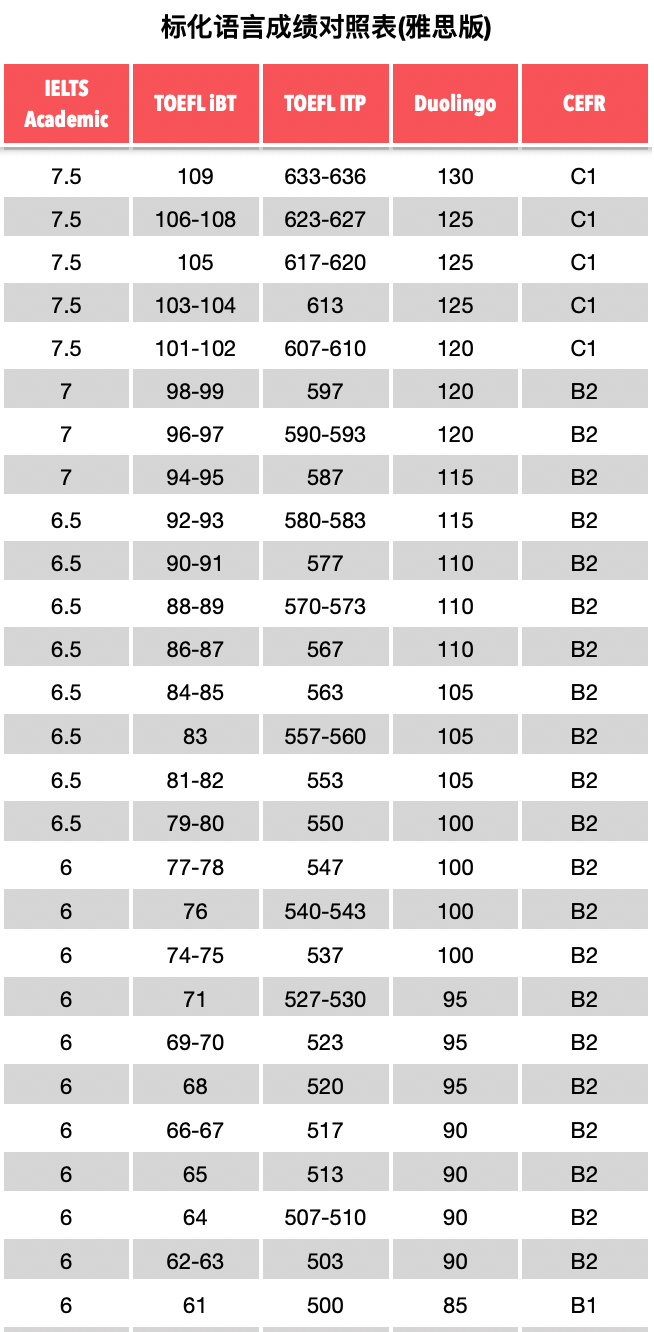托福听力中除了一些考察考生基础听力的主旨细节题外,还有难度更高的题型存在。这类题目一般被称为应用理解题(pragmatic understanding)题。下面小编就和大家分享托福听力解题思路分析,来欣赏一下吧。
托福听力解题思路分析
托福听力应用理解题2大类题型基础讲解
托福听力应用理解题,OG中的名称是pragmatic understanding。按照具体分类,可以分成对听力内容的功能理解以及态度理解题,以下将简称为功能题和态度题。从题型难度上来说,应用理解题可以算是基础听力题的进阶题型,考生除了仍然需要依赖听力中给出的信息来做判断外,还需要具备对信息的理解能力,也就是说,大家不仅要记住信息,还需要在此基础上加上自己的理解然后做出选择。因此,这类题目比起主旨和细节等题型来说,难度要更高一些。当然,能够做对这类题目,也会是大家托福听力水平的体现。而如果考生想要冲刺托福高分,比如25分以上,那么面对这两大类应用理解题,也需要确保足够的正确率才行。
托福听力功能题基础知识和解题思路介绍
托福听力功能题(Understanding the Function of What is Said Questions),从英文字面意思来看,就是要求考生理解听力材料中特定内容具备的功能作用,也就是为什么要说这些内容,探究说话者的目的。因此,这类题目的答案,很可能不会直接在听力素材中展现出来,需要考生对所讲内容以及上下文有一定的整体理解才能解答。这个题型的提问形式很好辨认,一般是:
What does the professor imply when he says this?
Why does the student say this?
What does the professor mean when she says this?
这个题型最大的特征,在于为了帮助考生回忆,会对问题涉及到的具体听力素材中的部分内容进行重放,考生可以重新听一遍相关的听力内容,之后再结合自己对听力素材的记忆和理解来进行解题。需要注意的是,功能题无法直接在提供的听力素材中找到答案,更多是以一种暗示隐含的方式提供考生需要的解题信息。用中文来说,就是言下之意。如果考生无法理解这一点,那么想要做好功能题还是颇有难度的。
托福听力态度题基础知识和解题思路介绍
态度题(Understanding the Speaker's Attitude Questions),顾名思义问的就是对话中某一方或者讲座中主讲者对于某个观点或者事物的态度看法观点等等。这个题型如果单看提问形式,其实和上面所说的功能题存在一定的相似性,但两者的解题思路却有较大的区别,先来看这个题型的具体提问方式有:
What can be inferred about the student?
What is the professor's attitude toward X?
What is the professor's opinion of X?
虽然提问方式相似,但态度题问的内容其实和功能题并不一致。而考生面对这类题目的解题思路其实也并不复杂,那就是需要听出说话者的具体态度。大家可以从说话者的语气、语音和语调中做出一些推测判断,从而获得自己需要的解题线索。比如疑问语气那就代表怀疑,吃惊的语气那就有意料之外惊讶的态度,而高兴的语气自然是认可认同。如何判断语气需要大家自己在平时做听力练习时进行积累,但学会判断语气并非难事,所以也不需要刻意去练习。另外这类题目中也会出现重放对应内容的情况,大家如果在第一遍听的时候没能注意到语气相关的细节,也可以通过重放来进行解题。
综上所述,托福听力中这两类无法直接找到答案的应用理解题,其难度还是有一定挑战性的,但考生只要能够抓住这类题目的解题技巧,小编相信想要做好它们也并非不可能。最后祝大家都能顺利做好托福听力,搞定难题拿到高分。
2020托福听力练习:抗嗝化合物减少奶牛甲烷排放
The global population is now nearly seven and a half billion.
And that's just humans.
Because our planet is also home to one-and-a-half-billion cows, another billion sheep, and a billion goats.
Their combined belches account for a full fifth of the world's methane emissions—and methane is about 30 times more potent at trapping heat than CO2.
But those methane emissions might get cut—by feeding the grazers something called 3-nitro oxypropanol.
"I can tell you, they like it.
No rejection at all."
Maik Kindermann, an organic chemist at DSM Nutritional Products in Switzerland.
Liking it, in the cow world, he says basically means they'll still gobble up their food, even with this stuff mixed in.
Kindermann's company developed the additive a few years back.
And it only targets those methane-belching microbes, while leaving the rest of the microbiome untouched.
The result?
A 30 percent decrease in methane emissions.
The study is in the Proceedings of the National Academy of Sciences.
Kindermann says he thinks the compound could be a win-win for the planet—and the animals.
"You know the methane is kind of a waste product.
And this energy, instead of losing it for the animal, it can be reused for the animal in terms of performance, and at the same time we are doing something for greenhouse gas emission and climate change."
The product's not on the market yet—toxicology tests are ongoing.
But the hope is that it might take some of the heat off of beef.
现在全世界人口数量约是75亿。
但这只是人类的数量。
因为我们的地球也是15亿奶牛、10亿绵羊及10亿山羊的家园。
这些动物反刍所排放的甲烷总量约占世界总量的1/5—而同时甲烷吸收热量的能力约是二氧化碳的30倍。
但在这些食草动物被喂食名为3-nitrooxypropanol的抗嗝化合物后,甲烷的排放量正在减少。
“我可以告诉你,它们真的很喜欢这种化合物。
真的一点也不排斥。”
瑞士DSM营养产品的有机化学家马克·金德曼说道。
他表示奶牛们非常喜欢这种化合物,即使添加到食物中,奶牛们仍会狼吞虎咽。
金德曼的公司在几年前研发出这种添加剂。
这种添加剂会拦截动物体内的微生物生成产生甲烷至关重要的酶。
而3-nitrooxypropanol只针对生成甲烷的微生物,其他微生物则不受影响。
结果如何呢?
甲烷排放减少30%。
这项研究已经在《美国国家科学院院刊》上发表。
金德曼认为这种化合物对地球和人类而言是一种双赢。
“甲烷是一种废物。
动物们可以再利用这种能源,而不是进行浪费,与此同时,我们在为温室气体排放及气候变化尽一份力。”
这款产品正在进行毒性测试,目前还未在市场上流通。
但我们希望的是,能够减少牛肉的一些热量。
1.account for 对…负有责任
例句:Computers account for 5% of the country's commercial electricity consumption.
计算机占去该国商业用电的5%。
2.get cut 减少
例句:If you are going to stand in front then it will get cut.
如果你站在植物前面就会被剪到。
3.at all 根本;简直
例句:I certainly don't remember talking to you at all.
我当然完全不记得和你讲过话。
4.mix in 混合
例句:Add the milk to the flour, and then mix in three eggs.
往面粉里加牛奶,再拌入3个鸡蛋。
2020托福听力练习:科学家扮成北极熊接近麝牛
"So I just don't approach, at least initially, a group of musk oxen."
Joel Berger, with the Wildlife Conservation Society and Colorado State University.
"What I do is to take into account other factors that might reflect their responses. And so what I need to know is something about the group size, whether or not males are in the group. I need to know something about snow depth, about snow penetration or how hard the snow is. And then I'll approach and try to understand whether they stay, whether they flee, whether they charge."
Oh, one more important point. When Berger approaches the musk oxen, on Russia's Wrangel Island north of the Arctic Circle, he's dressed up like a polar bear.
"I know the media has a good time when we dress up as animal models. Of course they do. But remember, two Nobel laureates, Conrad Lorentz and Niko Tinbergen, led the way for getting inside the minds of animals...and they've done this through innovative models."
Polar bears prefer seals for their meals. But the loss of sea ice is forcing them onto the land to hunt for prey that's usually not on their menu. The idea here is to gauge the response of musk oxen to this formerly rare threat.
"It's really tough to get inside the mind of a musk ox and especially to understand from mere anecdotes how they may respond in this emerging dynamic."
Berger works with Russian researchers on their side of the Bering Strait and with Americans in Alaska.
"We're currently in the process of evaluating more than 100 simulated interactions, some that include our three years of work in Alaska, as well as over on the Russian side...the last time I did something like this was about 15 years ago, to understand how moose and other species would respond to the new threat of wolves in and around the Yellowstone system."
Back then, Berger and his wife would get into a moose outfit to be able to get close to the ungulates. I wrote about that effort in 1997. You can find it by googling my name and Joel Berger—a man who's work really suits him. (That joke was unbearable.)
“我不会靠近,至少不会从一开始就靠近一群麝牛。”
乔尔·博格在野生动物保护协会和科罗拉多州立大学工作。
“我采取的方法是,把其他可能影响它们反应的因素都考虑进去。我需要知道麝牛群的规模,这群麝牛里是否有雄性麝牛。我还要了解积雪的深度、渗透性及硬度。之后我才会逐渐靠近它们,试图去了解它们是会留在原地,会逃走,还是会发动攻击。”
还有一个重点。博格在位于北极圈以北的俄罗斯弗兰格尔岛靠近麝牛时,他会打扮得像一只北极熊。
“我知道媒体看到我们打扮成动物的样子会很高兴。他们当然会高兴。不过要记住,引领我们去了解动物思想的是两位诺贝尔奖获得者——康拉德·洛伦兹和尼古拉斯·廷伯根,他们采用的就是创新模式。”
北极熊最爱吃海豹。但是海冰的减少迫使它们去陆地上捕食本不在它们捕食范围内的猎物。博格的目的是评估麝牛面对这种罕见威胁时的反应。
“了解麝牛的想法真的非常难,只凭轶事来了解他们会如何应对这种新出现的变化更难。”
博格同俄罗斯研究人员在白令海峡划分的俄罗斯境内一起工作,同美国研究人员在阿拉斯加工作。
“目前我们正在对100余个模拟交互作用进行评估,这其中包括阿拉斯加方面三年的工作成果,以及俄罗斯方面的成果,我上次做这种工作是在15年前,当时我研究的是驼鹿和其他物种如何应对黄石公园内部和周边狼群的威胁。”
那时,博格和他的妻子会穿上驼鹿装,以接近这一有蹄类哺乳动物。1997年时我曾写过有关那次研究的文章。听众可以用谷歌搜索我和博格的名字找到这篇文章,博格的工作真的很适合他。(这个玩笑很无聊)
重点讲解:
1. take into account 考虑到;把…计算在内;
例句:He will take into account my request.
他会考虑我的要求。
2. dress up 装扮;打扮;
例句:He often dresses up as a superman.
他经常把自己装扮成超人。
3. hunt for (人)打猎,猎杀;(动物)猎食;
例句:Davy liked to hunt for bears best of all.
大卫最喜欢猎熊了。
4. repond to 应对;作出回应;作出反应;
例句:A child's age affects the child how repond to the diaster.
孩子的年龄也会影响他们对灾难的反应。
2020托福听力解题思路分析相关文章:
★ 英语学习
★ 学习资料库
2020托福听力解题思路分析
understanding)题。下面小编就和大家分享托福听力解题思路分析,来欣赏一下吧。托福听力解题思路分析托福听。下面小编给大家分享2020托福听力解题思路分析,希望能帮助到大家。 2020托福听力解题思路分析文档下载网址链接:
上一篇:2020托福听力备考攻略






